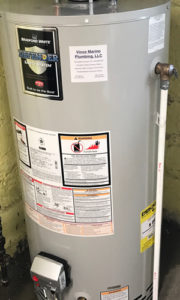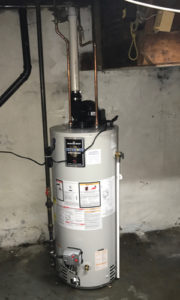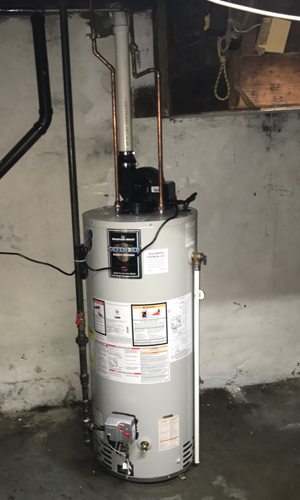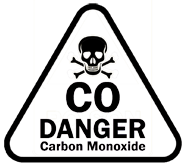The two types of gas water heaters commonly installed for residential and commercial applications are the direct vent and power vent model. The two vary in design and installation cost and also have differences in safety and energy consumption savings. Here are the differences between the two water heaters, so when its time for you to have your water heater replaced you will know which one suits your purpose the best.
What’s the difference?

Direct vent water heaters
A direct vented or atmospheric gas water heater vents its flue gas into a chimney or vent pipe that terminates above the roof. It draws air from the room it’s in for combustion in the burner chamber. It also always needs fresh air for the combustion to work efficiently. If not enough new air is available for the water heater, it will start to backdraft and corrode at the top. That makes the water heater need to be replaced sooner than it normally should.
Since 2003 all manufactured direct vent water heaters have a sealed combustion chamber to prevent ignition sources such as gasoline and paint thinner fumes from getting into the combustion chamber. However, the water heater needs to be installed in a well-ventilated room that gets adequate combustion air otherwise the pilot light could go out!

Power vented water heaters
The power vent water heater is more of a versatile water heater. Unlike the direct vent model it doesn’t need a chimney or vent pipe going to the roof to exhaust its flue gases. For instance, if you’re planning to remodel your basement and want to relocate the water heater, you don’t necessarily need a chimney. Also if you have chimney issues such as backdrafts blowing out the pilot light in your water heater, the direct vent heater will eliminate these problems for you.
The power vent water heater can be installed anywhere in a home or building, but the water pipes and gas pipe have to move along with it. So if you are planning on having your water heater relocated and wanted to go with a power vent model, remember that the water and gas piping also need to be extended. Depending on how far the water heater gets placed can increase the installation cost for it.
A power vented water heater requires the following to operate:
- electric receptacle
- powered vent blower
- spark ignition
- pvc vent pipe
- gas supply
Safety and the efficiency differences
If there is a backdraft with the direct vent water heater, it will allow carbon monoxide to build up creating a possibly deadly situation. However, if there’s a backdraft with the power vented water heater, it will automatically shut down. So that’s why I recommend the power vented water heater even though it may be a little more expensive.
What about your water heater?
Do you have concerns about your water heater? Schedule an appointment with Vince to inspect or replace your water heater.


